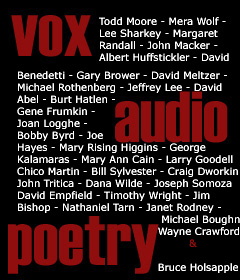The Well-Prepared Clavier
The twenty four tracks on this disk cover a lot of ground, from straight solos through musique concrete and multi-layered overdubs as well as the expected prepared piano workouts, notably the “Seven Studies“, which transcend the gimmick-value of preparation to produce some enjoyable pieces of music. Elsewhere, Brennan gets at the strings directly — his use of bow-strings on the opening track is astonishing, for example, and had this listener fooled into picturing a string section until the sleeve notes gave the game away. He has a few more tricks up his sleeve, too.
The idea of accompanying oneself with recordings of squeaky door hinges sounds like a loser of an idea, the kind of thing which we joke about when we’re admitting that improvised music can be funny sometimes. Miraculously, it works, the samples creating sometimes scraping loops and sometimes harsh interjections into Brennan’s improvisation. So too, against all the odds, do his rhumba in 7/4 and his use of environmental recordings from Aldgate East tube station, which conjures the wonderful image of Brennan playing his piano on the platform, jamming along with the announcements and the rush of the trains.
These first seventeen tracks are studio recordings, while the eighteenth is a brief duet with Marianne Schroeder. This is enjoyable if a little tantalising, three minutes hardly being enough to satisfy even a passingly interested listener.The remainder of the disk is a live set from 1997; it’s rather disconcerting to hear an announcement welcoming John Wolf Brennan to the stage nearly an hour into the recording, but perhaps this is another of his conceptual gags. In any event, this is just as successful as what precedes it, with the audience audibly recognising one of the high points — a clever piece of lo-fi live sampling.
One sometimes gets the feeling that Brennan would like to be a blood-and-thunder player, but his whimsical Romantic streak gets the better of him. If this is a weakness, the resultant pieces are strong in spite of it, a robust wistfulness making them appealing little vignettes which sit together perfectly nicely. And occasionally he manages to pull off that alternative persona, notably on “to John C. (Age)“, a very un-Cagean performance which seems to rattle the fixtures of the Queen Elisabeth Hall. Richard Cochrane
 John Wolf Brennan
John Wolf Brennan


Leave a Reply